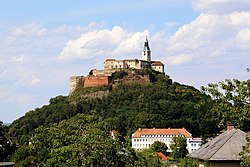| Burg Neuhaus bei Stubenberg | |
|---|---|
| Stubenberg am See | |
 Burg Neuhaus | |
| Site information | |
| Type | Hill Castle |
| Code | AT-6 |
| Location | |
| Coordinates | 47°14′44″N15°46′48″E / 47.245560°N 15.779982°E |
| Height | 553 m (AA) |
| Site history | |
| Built | around 1350 to 1375 |
Burg Neuhaus bei Stubenberg is a renovated castle ruin in Stubenberg, Styria. It is located above the ravine of the Feistritz river named Stubenbergklamm (Stubenberg ravine).









